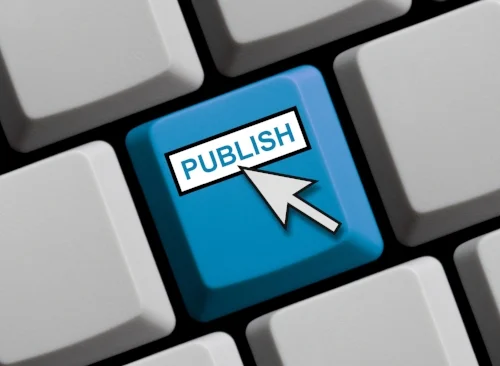Estimated reading time: 4 mins
You may have heard the famous Silicon Valley expression, “Fail fast, fail often.” While failure is never a good goal, it can equip a business for future success if its leaders understand what went wrong. And yet, “most organizations are profoundly biased against failure and make no systematic effort to study it,” writes Rita McGrath at Harvard Business Review. “Executives hide mistakes or pretend they were always part of the master plan. Failures become undiscussable, and people grow so afraid of hurting their career prospects that they eventually stop taking risks.” While avoiding failure altogether is impossible, the next best thing is to fail fruitfully. Tweet This
Fruitful failing includes analyzing what went wrong and applying that knowledge to future endeavors. While “the wisdom of learning from failure is incontrovertible,” says Harvard Business School Professor Amy C. Edmondson, “organizations that do it well are extraordinarily rare.” Many companies focus on responsibility and blame after a failure. Instead, certain failures, such as those that occur at the frontier of an industry, are useful because “they provide valuable new knowledge that can help an organization leap ahead of the competition and ensure its future growth,” says Edmondson.
5 Ways to Fail Fruitfully
How can you ensure that your failures are fruitful? Below are five strategies for transforming failures in developing services for pharmaceutical companies from potentially devastating disasters to experiences that strengthen your business and bottom line.
1. Fail Fast
The faster you know whether a project will succeed or not, the faster you can learn from it and move on to another one. “An early failure lessens the pressure to continue with the project...because your investment in it is not large,” says McGrath. Quick failure allows you to test an idea or hunch and move on to the next one without devoting (and losing) a great deal of time.
One way Pharma Acumen encourages clients to fail fast is to solicit charter clients early in development. Some charter clients are paying clients while others serve as sounding boards. A charter client program gets meaningful attention from paying clients and is a great way to judge the commercial viability of a new offering. If you can’t get multiple charter clients for your project it is a sign you have issues to address. We help companies facilitate their charter client programs.
2. Fail Often
In the same vein as failing fast, failing often allows you to ascertain what works and what doesn’t. “If you have an idea, build the offer, give it to customers, and see what happens,” says Peter Cohan of Inc.com. “If the customers don’t like your idea, try something new. If they like part of the idea, develop that. And if it fails, keep trying until you succeed.” Or, as author Tom Kelley succinctly puts it, “Fail often in order to succeed sooner.”
3. Fail Decisively
Akin to failing fast and often, failing decisively “can save you from throwing additional resources at a losing proposition,” says McGrath. Instead of attempting to salvage a product that will obviously not work out, cut your losses and move on. Within the pharma industry especially, attempts to innovate can lead to prolonged development and testing, keeping a company from making critical decisions about a product’s future. We work with our clients to spotlight these situations and push decisions forward.
4. Fail Cheaply
Failing fast, often, or decisively won’t matter if you fail expensively. “Initiatives should be designed to make the consequences of failure modest,” says McGrath. It’s often better to begin with a mock-up, prototype, or small-scale service launch than to invest significant resources pushing a large project down the pipeline. Failing cheaply allows your business to move from idea to idea without risking large-scale fiscal losses.
Technology and entry barriers to developing new services are dropping radically. (This is both a positive and a negative.) Services like Amazon Web Services have simplified the development process; if you have access to a few talented team members you can assemble prototypes quickly and inexpensively. The effort required is not nearly as difficult as prototyping in the 1990s.
5. Fail Intelligently
Failure can be mitigated or even leveraged for future success but only if done intelligently. “Rigorously extract value from failure, so you can measure—and improve—your return on it, boosting benefits while controlling costs,” say Julian Birkinshaw and Martine Haas at HBR. Failing intelligently includes learning from what went wrong, having a method in place for analyzing failure, and sharing lessons learned with your team. “Failure is less painful when you extract the maximum value from it. If you learn from each mistake, large and small, share those lessons, and periodically check that these processes are helping your organization move more efficiently in the right direction, your return on failure will skyrocket,” say Birkinshaw and Haas.
Conclusion
“People remember your hits more than your misses. It’s okay to fail as long as you learn from your mistakes and correct them fast,” says Susan Wojcicki, Senior VP of Advertising at Google. While failure is not the end goal when developing new products and services, it is often inevitable. How you handle failure will be the difference between failing fruitfully and just failing.
At Pharma Acumen, we’ve helped clients capitalize on failures by analyzing them and applying knowledge gained to future successes. We have proprietary systems in place for understanding and extracting value from failures. Whether your business needs a full-scale analysis or a sounding board, we have the tools and expertise to help you fail fruitfully. Contact Brian to learn more about how we can best serve you.
Enjoy this article? Don't forget to share.











